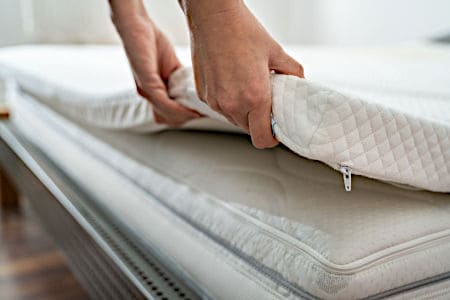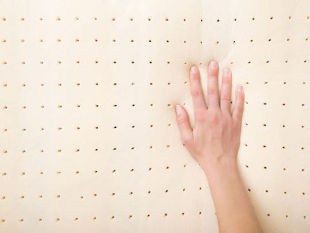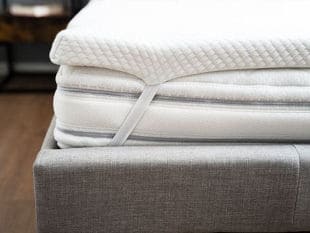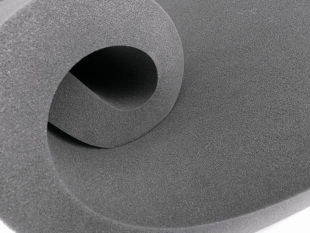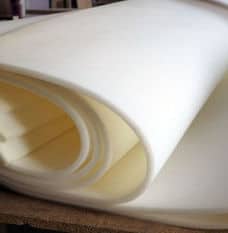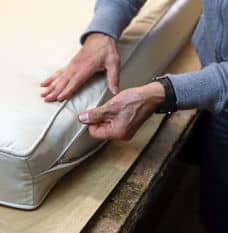There are many ways that a mattress may not feel quite right. The feel of most mattresses can be altered by using a mattress topper, but different kinds of foam toppers will not work the same. To find the best type of foam mattress topper, it is helpful to understand the kind of discomfort the mattress is causing.
(Just a note—the terms “topper” and “pad” in this context are the same thing: something put on a mattress to help make it more comfortable. We’re not referring to a “mattress pad” made of quilted fiber and fabric here. You can find those in the Mattress Covers section of our website if you need one.)
First of all, if the mattress is too soft, a topper will probably not help. In our experience, a firm topper on a soft mattress does not keep the mattress under the topper from compressing. In the worst case, the mattress will sink under the pressure and the firmer topper will bend, like a taco, with you at the center. The best way to correct a mattress that is worn out, dipping, or too soft is to replace it with a mattress that is comfortable.
If the mattress is too hard, your body is likely telling you where/how it’s too hard; Is the whole surface just too hard for you? Are you only feeling pressure in specific areas, like your shoulder or hip? The answer to these questions can help you figure out the best material to solve the problem.
Natural Latex Mattress Toppers: Are best to add a resilient softness to the whole surface of a mattress. The topper is just a layer of a natural rubber foam. They last a long time with regular use and add a bit of bounce to a hard mattress.
Latex tends to balance temperature; it feels cool in warm weather and a little warm in colder seasons. Latex needs to be protected from sunlight and air pollution (the same kind of things that reduce our skin’s elasticity) to have the longest life span. If well protected, latex can outlast most of the other materials available by many years.
Memory Foam Toppers: Are better suited for alleviating pressure from the mattress that you feel in specific areas. Instead of masking the firmness of the mattress with its own resilience (like latex), it instead lets you sink into it without much resistance and uses its dense cell structure to distribute the support you receive from the mattress. Instead of getting sore points at your shoulder and hip, or losing circulation, it cradles you and helps the support feel more even over your whole body, from head to foot.
Memory foam is not really firm or soft—the actual firmness you feel is coming from your mattress. Some memory foam is “stiff” or “supple.” Stiffer memory foam just moves more slowly when it adjusts to the contours of your body, making you think it’s harder.
A denser memory foam pad will last longer and more evenly distribute support. You would only want a lighter density memory foam pad if you needed a cheaper option to save money in the short term. You will feel more localized pressure when using a light density memory foam pad and it will wear out sooner. If you can afford a heavier memory foam it will save you more money in the long term. We recommend at least 5.0 pounds density for long term use. (The foam density number refers to how much one cubic foot of that kind of foam weighs.)
Most memory foam tends to retain heat, so if you are a warm sleeper, you may want to investigate whether latex will help you better.

